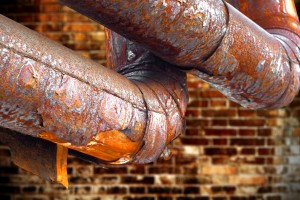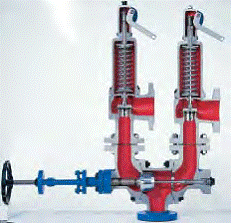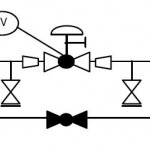'Check valves' or 'Non return valves' are designed to prevent backflow (i.e. the reversal of flow) in a piping system.
These valves are energized by the fluid itself flowing in the pipe and only open up when the fluid flows in one particular direction. The pressure of the fluid passing through opens the valve, whereas any flow reversal will close the valve. Valve closure is accomplished by various ways: by the weight of the check mechanism, by back pressure, by a spring or by a combination of these factors.
Below the most basic types of check valves in use today are presented. These are the following:
- Swing check valves
- Tilting disc check valves
- Lift check valves
- Piston check valves
- Stop check valves
Swing check valves
Swing check valves are fully closed when the flow in forward direction reaches zero and prevent back flow. Turbulence as well as pressure drop across the valve are kept to a minimum. Swing check valves basically consist of a disk and hinge, both of which are suspended from the valve's body through a hinge pin. The disk seals against the seat, which is integral with the body.
These valves are usually installed together with gate valves, since they provide relatively free flow with minimum pressure drop. They are recommended for use in lines with low flow. If they are used at lines with pulsating.
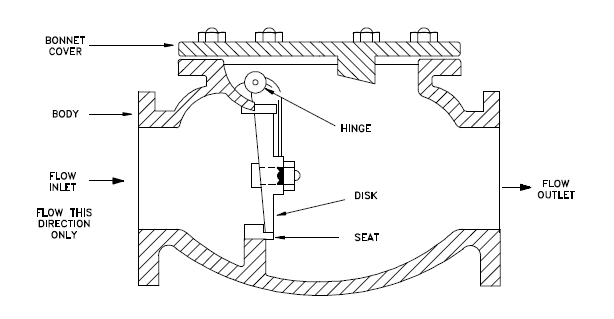
Tilting disc check valves
Tilting disc check valves are similar to swing check valves. They can be installed in horizontal lines or vertical lines with upward flow. The ''airfoil'' design of the disc enables it to float around the flow. Backpressure against the disc moves it across the soft seal into the metal seat for sealing purposes. If the reverse flow pressure is not enough for ensuring tight sealing, the valve can also be fitted with an outer lever and weight.
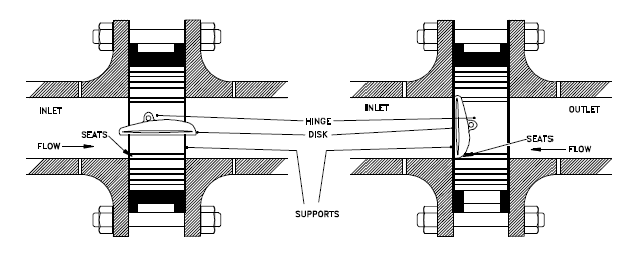
Lift check valves
Lift check valves have similar seating arrangements with globe valves. As such, they are quite common in piping systems in which globe valves are used as flow modulating valves. They are mostly recommended for use with steam, air, gas and water lines with high flowrates.
Flow to lift check valves must always come from below the seat. As the flow enters, the disc is lifted from the seat by the pressure of the upstream flow. When the flow stops or reverses, the disk is forced to the seat of the valve by the actions of both backflow and gravity.

Piston check valves
A piston check valve is basically a lift check valve. It basically consists of a piston and cylinder that helps provide a ''cushioning'' effect during operation. Similar to the lift check valve, incoming flow has to enter from below the seat. Piston check valves are mostly found in systems employing globe and angle valves which are subject to very frequent changes in flow direction.
Stop check valves
A stop check valve is actually a combination of a lift check valve and a globe valve. Similar to a globe valve, its stem, when closed, provides a tight seal as well as prevents the disc from moving out of the seat.

